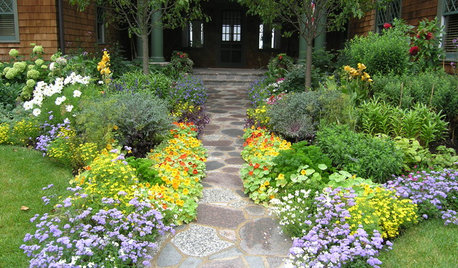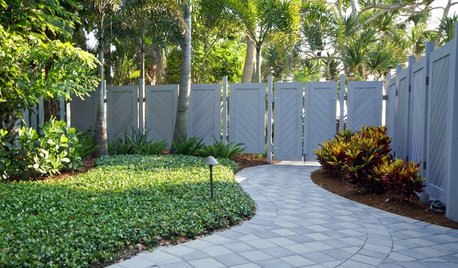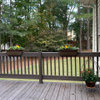Best Pathway/Sidewalk Material for Hard, Uneven Surfaces
deborahb_gardener
14 years ago
Related Stories

KITCHEN DESIGNKitchen Countertops 101: Choosing a Surface Material
Explore the pros and cons of 11 kitchen countertop materials. The options may surprise you
Full Story
MATERIALSPrecast Concrete Pavers Make a Versatile Surface in the Garden
You can use concrete pavers in a variety of shapes and colors for your patio, walkway, driveway and more
Full Story
LANDSCAPE DESIGNHow to Pick the Right Paving and Decking Material
Once you’ve got the walls or fences of your garden figured out, it’s time to consider the ground surface or floors
Full Story
GARDENING GUIDESPathway Plantings That Please the Senses
Add some color, life and intrigue beside your sidewalk with these 7 suggestions
Full Story
BATHROOM DESIGNBathroom Surfaces: Ceramic Tile Pros and Cons
Learn the facts on this popular material for bathroom walls and floors, including costs and maintenance needs, before you commit
Full Story
RUSTIC STYLEBrick Floors: Could This Durable Material Work for Your House?
You love the old-world look, but will you like the feel of it underfoot? Learn the pros and cons of interior brick flooring
Full Story
ARCHITECTUREDesign Workshop: The Beauty of Humble Materials
Discover the appeal of budget-friendly plywood, concrete and other modest surfaces
Full Story
LANDSCAPE DESIGNHow to Choose a Fence That Feels Right and Works Hard
Making a thoughtful fencing choice now can create happiness for years to come
Full Story
KITCHEN COUNTERTOPSKitchen Counters: High-Tech Solid Surfaces Make Maintenance Easy
Sculpted by heat and nonporous by nature, solid-surface countertops bring imagination and low maintenance to the kitchen
Full Story
LANDSCAPE DESIGN10 Materials for an Elegant, Harmonious Landscape
Give your landscape the polished, rustic or perfectly imperfect look you love with these natural and engineered materials
Full StoryMore Discussions









catkim
bahia
Related Professionals
North New Hyde Park Landscape Architects & Landscape Designers · Salem Landscape Architects & Landscape Designers · Newcastle Landscape Architects & Landscape Designers · Del Aire Landscape Contractors · Hurricane Landscape Contractors · Inglewood Landscape Contractors · Dorchester Center Decks, Patios & Outdoor Enclosures · Little Rock Decks, Patios & Outdoor Enclosures · Livingston Decks, Patios & Outdoor Enclosures · Palo Alto Decks, Patios & Outdoor Enclosures · Saint Louis Park Decks, Patios & Outdoor Enclosures · Troy Decks, Patios & Outdoor Enclosures · Urbana Decks, Patios & Outdoor Enclosures · Villa Park Decks, Patios & Outdoor Enclosures · Englewood Swimming Pool Buildersdeviant-deziner
deborahb_gardenerOriginal Author
karinl